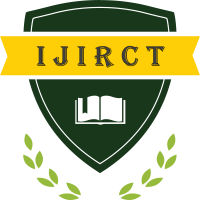Design and Integration of DFIG with D-STATCOM for Fault Ride through Capability Enhancement Voltage and Output Power Fluctuation Suppression
Author(s): Tammisetti Kranti Kiran, K.V.V Naga Babu
Publication #: IJIRCT1601018
Date of Publication: 03.11.2016
Country: India
Pages: 107-110
Published In: Volume 2 Issue 3 November-2016
Abstract
This project presents a systematic approach based on mode shape and transient response of a DSTATCOM utilized as an exciter for induction generators (IG). A physical control scheme, including four control loops: ac voltage, dc voltage, ac active current and ac reactive current controllers, is pre-specified for the DSTATCOM. A synthetic algorithm is proposed to embed these physical control loops in the output feedback path. With appropriate oscillation mode design (eigen structure) in each state variable, the DSTATCOM active current and reactive current will no longer be governed by the same mode but driven by new respective modes. The simulation and experimental results demonstrated that under various system disturbances, the proposed mode decoupling DSTATCOM is effective in regulating IG terminal voltage.
The impact of ever-changing wind speed on power quality coupled with the need for an excitation current make the voltage regulation difficult, especially when the IG is connected to a weak ac system. An alternative approach using a linearized state-space model in the DSTATCOM control design was proposed. A DSTATCOM composed of a three phase IGBT-based VSI, a coupling transformer, a filter and a dc capacitor, is employed. The basic DSTATCOM active and reactive current control can be derived from the DSTATCOM model. the DSTATCOM-compensated IG system. The experimental IG is driven by a torque-controlled servomotor which emulates a wind turbine. The torque command of the servomotor driver is calculated based on the rotor speed and the mechanical power that emulates the wind power at various wind speed. To avoid ac harmonic current distortion and high-frequency noise interference stemmed from VSI voltage modulation, care must be taken when designing the low-pass filter prior to the collection of the analog signals.
The major feature of the proposed controller is that for a given feedback framework, the control gains can be systematically synthesized through then pre-specified shape of the closed-loop response. In this work, the mode shape was determined using eigen structure assignment which suppresses the DSTATCOM ac current mode activities in the reactive current and active current; thereby reinforcing the reactive current activities on the load bus voltage regulation. Note that the electromechanical mode damping can also be improved while determining the mode shape of the closed-loop responses.
The simulation and experimental results demonstrated excellent performance with the proposed mode decoupling DSTATCOM, which is suitable to compensate for various disturbances occurring in the wind-driven IG systems.
Keywords: DSTATCOM, Grid, DFIG, DC-DC Converter, Three phase faults
Download/View Count: 402
Share this Article
